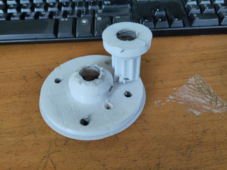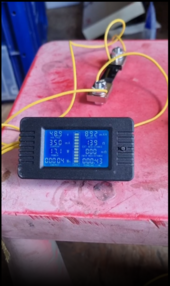yeah no

I never saw 45 watts

it most likely read 4.5 watts. well that is a blunder by a factor of 10!! how embarrassing.
Today with good wind (around the 3m/s mark according to my hand held with gusts up to 4.2m/s) I have gotten bad results

The highest I saw was 27.6 watts and it broke the pulley that drives the PMA

My heart broke a bit as well at the very moment
 View attachment 225161
View attachment 225161
What I also notice it that it really fluctuates a lot. Not stable at all.
With most of the times wattages around the 4 mark. Sometimes even 0 to be measured. But plenty of spikes like the following
View attachment 225162
Now I can already tell that the solution would be simple.
You see I strongly believe that the inertia in the blades has more in store for us. Only how do we extract that energy?
Easy as pie!!

Just make the PMA spin much faster and have coils with thicker and shorter wires.
ahahha if only things were ever that simple. so back to the drawing board it is getting this PMA to rotate much faster.
parallel to that of course I will hunt for plant heater matts











